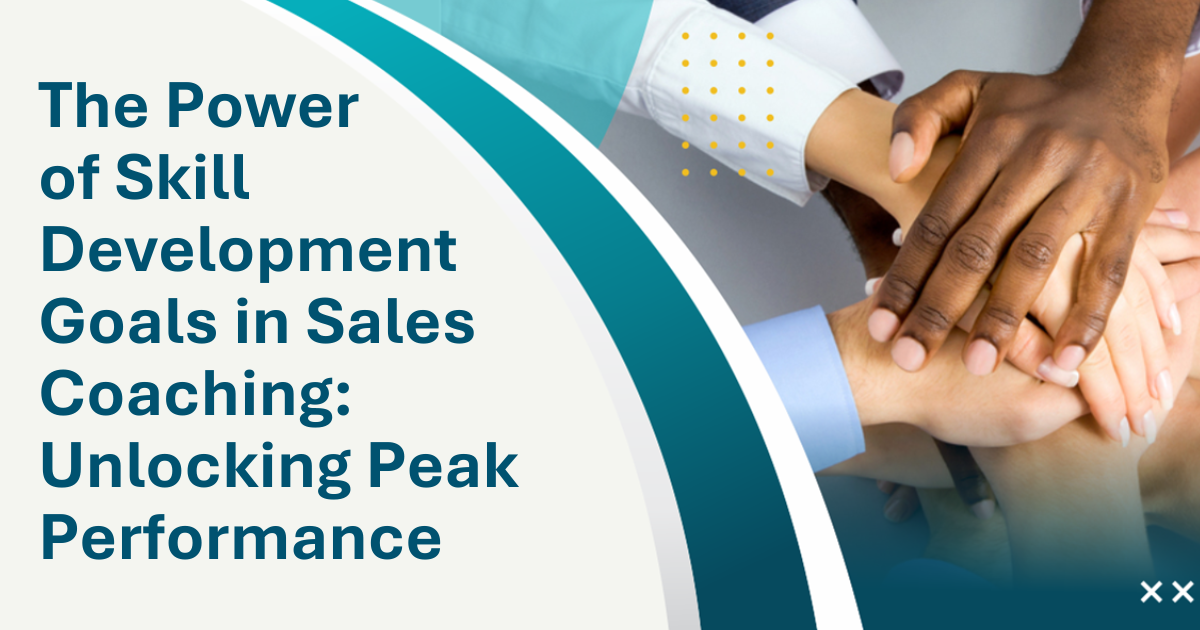In the high-stakes world of pharmaceutical sales, the difference between good and exceptional performance often comes down to one critical factor: structured skill development. Recent research reveals that sales teams with well-defined skill development goals consistently outperform their peers. But what makes these goals so powerful, and how can organizations harness their potential to drive extraordinary results?
The Science Behind Skill Development Goals
Why Goals Matter
The human brain responds powerfully to structured goals:
-
Creates focused attention
-
Triggers motivation centers
-
Activates learning pathways
-
Reinforces neural connections
The Dual-Horizon Approach
Research shows top performers excel by maintaining:
-
Short-term skill objectives (1-4 weeks)
-
Long-term development goals (3-12 months)
The Architecture of Effective Skill Development Goals
Short-Term Goals: Building Immediate Competency
Characteristics:
-
Specific behavioral targets
-
Measurable outcomes
-
Achievable within weeks
-
Directly applicable skills
Examples in Practice:
-
Message Delivery
-
Perfect product story flow
-
Master key objection handles
-
Enhance opening techniques
-
Improve closing skills
-
-
Customer Engagement
-
Develop better questioning techniques
-
Enhance active listening skills
-
Perfect virtual presentation delivery
-
Master clinical data presentation
-
Long-Term Goals: Creating Sustainable Excellence
Strategic Focus Areas:
-
Complex skill mastery
-
Territory management expertise
-
Strategic account development
-
Leadership capability building
Development Pathways:
-
Clinical Excellence
-
Deep therapeutic knowledge
-
Disease state expertise
-
Treatment pathway understanding
-
Outcomes data mastery
-
-
Business Acumen
-
Market dynamics comprehension
-
Healthcare economics mastery
-
Strategic planning capability
-
Account portfolio management
-
Implementation Framework: Making Goals Work
Phase 1: Assessment and Planning
Current State Analysis:
-
Skill baseline establishment
-
Performance gap identification
-
Development needs prioritization
-
Resource availability assessment
Goal Setting Process:
-
Individual Assessment
-
Current capabilities
-
Performance requirements
-
Development aspirations
-
Career objectives
-
-
Goal Formulation
-
SMART criteria application
-
Milestone identification
-
Timeline development
-
Success metrics definition
-
Phase 2: Execution and Support
Implementation Strategy:
-
Skill Building Activities
-
Practice sessions
-
Role-play exercises
-
Field application
-
Virtual simulation
-
-
Progress Monitoring
-
Regular check-ins
-
Performance tracking
-
Feedback collection
-
Adjustment protocols
-
Phase 3: Measurement and Refinement
Success Metrics:
-
Behavioral change indicators
-
Performance improvements
-
Customer feedback
-
Business impact measures
The Power of Progressive Achievement
Building Momentum Through Success
Quick Wins Strategy:
-
Early Victory Identification
-
Achievable initial goals
-
Visible progress markers
-
Confidence builders
-
Motivation enhancers
-
-
Success Amplification
-
Achievement celebration
-
Progress sharing
-
Peer recognition
-
Momentum building
-
Creating a Supporting Environment
Essential Elements:
1. Leadership Support
-
Clear expectations
-
Resource provision
-
Progress monitoring
-
Success recognition
2. Structural Support
-
Time allocation
-
Tool availability
-
Training resources
-
Technology enablement
3. Cultural Support
-
Learning environment
-
Growth mindset
-
Feedback culture
-
Achievement celebration
Overcoming Common Challenges
Challenge 1: Goal Clarity
Solution:
-
Detailed goal definition
-
Clear success criteria
-
Specific timelines
-
Measurable outcomes
Challenge 2: Consistency
Solution:
-
Regular review schedule
-
Progress tracking systems
-
Accountability measures
-
Support mechanisms
Challenge 3: Motivation Maintenance
Solution:
-
Progress visualization
-
Achievement recognition
-
Peer support networks
-
Regular reinforcement
Advanced Strategies for Sustainable Development
Building complementary capabilities:
-
Foundation skills
-
Advanced techniques
-
Expertise areas
-
Leadership capabilities
2. Cross-Functional Development
Expanding skill horizons:
-
Market access knowledge
-
Digital engagement capabilities
-
Business analytics
-
Strategic planning
3. Future-Focused Development
Preparing for tomorrow:
-
Emerging industry trends
-
New technology adoption
-
Evolving customer needs
-
Market dynamic changes
Measuring Impact and ROI
Performance Metrics:
-
Direct Measures
-
Sales results
-
Market share
-
Customer engagement
-
Territory growth
-
-
Indirect Indicators
-
Team confidence
-
Customer satisfaction
-
Peer recognition
-
Career progression
-
The Path to Excellence: Your Action Plan
Immediate Steps:
-
Goal Assessment
-
Review current goals
-
Identify gaps
-
Set priorities
-
Create timelines
-
-
Implementation Planning
-
Resource allocation
-
Support system setup
-
Progress tracking
-
Success metrics
-
-
Execution Launch
-
Initial goals activation
-
Support deployment
-
Monitoring initiation
-
Feedback collection
-
Creating Sustainable Success
Key Success Factors:
-
Commitment to Process
-
Regular review
-
Consistent support
-
Ongoing adjustment
-
Continuous improvement
-
-
Progress Recognition
-
Achievement celebration
-
Success sharing
-
Momentum maintenance
-
Motivation reinforcement
-
-
Continuous Evolution
-
Goal refinement
-
Approach adjustment
-
Strategy enhancement
-
Method improvement
-
Conclusion: Transforming Potential into Performance
The power of skill development goals lies not just in their ability to drive immediate performance improvements, but in their capacity to create sustainable excellence. By implementing a structured approach to skill development, organizations can:
-
Accelerate performance improvement
-
Build sustainable capabilities
-
Create competitive advantage
-
Drive long-term success
Your Next Steps: The journey to excellence through skill development goals starts now. Begin by:
-
Assessing your current state
-
Setting clear development objectives
-
Creating supporting structures
-
Implementing measurement systems
Remember: Every great achievement starts with a clear goal. What will your first skill development goal be?



